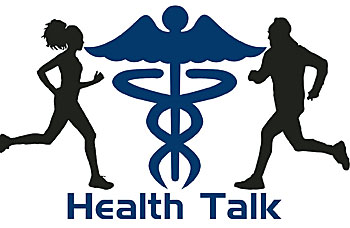 In my last article I discussed how acetaminophen’s absorption and metabolism occurs in the human body. Although some metabolism of a drug occurs immediately after absorption, it does not mean that metabolism only occurs at that one time throughout the journey. Like distribution and excretion (or elimination), these pharmacokinetic actions occur randomly.
In my last article I discussed how acetaminophen’s absorption and metabolism occurs in the human body. Although some metabolism of a drug occurs immediately after absorption, it does not mean that metabolism only occurs at that one time throughout the journey. Like distribution and excretion (or elimination), these pharmacokinetic actions occur randomly.
Distribution
 Once acetaminophen enters the blood stream, it is now in the distribution phase of the journey. The blood stream acts as a super highway, allowing the drug to reach various tissues and organs, including the brain where it produces its desired effect, pain relief. While in the blood stream, most drugs, including acetaminophen, are bound to proteins. When a drug is bound to protein, leaving the blood stream is off limits.
Once acetaminophen enters the blood stream, it is now in the distribution phase of the journey. The blood stream acts as a super highway, allowing the drug to reach various tissues and organs, including the brain where it produces its desired effect, pain relief. While in the blood stream, most drugs, including acetaminophen, are bound to proteins. When a drug is bound to protein, leaving the blood stream is off limits.
The percent of drug-protein binding varies for each drug. While bound to protein, drugs, including acetaminophen, are inactive. An inactive drug in the blood stream cannot enter other tissues or organs. The unbound or free portion of acetaminophen is active and travels freely to specific tissues and organs. Not all tissues and organs allow drug entry due to the particular chemical and physical properties of a drug. If a patient has low specific protein fractions in the blood, more drug would exist in its active form. This could be very critical since more drug is unbound and is now available to work at its site(s) of action. With more than usual active drug producing an effect, there is a possibility of more toxicity.
For specific reasons too complex to explain in this article, a drug traveling through the blood stream appears at times as a foreign entity in the human body. It will be attacked by defense cells within the blood, creating what is termed an allergic reaction. Some allergic reactions are mild manifesting with hives, itching, and/or redness of the skin. Occasionally there may be a more severe reaction which includes some or all of the following: hives, trouble breathing, swelling of the lips and/or tongue, swelling and/or tightness of the throat, nausea, vomiting, and/or diarrhea, dizziness or fainting, an increase in heart rate, a decrease in blood pressure, and stomach pains. This type of severe allergic reaction is defined as anaphylaxis and is life-threatening.
Excretion
 Acetaminophen, like other drugs in its active form will continue to make a circuitous route through the blood stream until it returns to the liver for additional metabolism, or reaches its site of action, or is excreted out of the body. Based on pharmacokinetic studies done in healthy individuals, during phase I and II of drug development (see one of my previous articles), less than 25 milligrams of the original 500 milligram acetaminophen dose will be excreted out of the body through the kidney.
Acetaminophen, like other drugs in its active form will continue to make a circuitous route through the blood stream until it returns to the liver for additional metabolism, or reaches its site of action, or is excreted out of the body. Based on pharmacokinetic studies done in healthy individuals, during phase I and II of drug development (see one of my previous articles), less than 25 milligrams of the original 500 milligram acetaminophen dose will be excreted out of the body through the kidney.
Most of the remaining 475 milligrams has been metabolized into inactive chemicals. When you consider the amount of acetaminophen unchanged after absorption and metabolism, there should be no traceable amount of acetaminophen in the body after an eight-hour period.
In addition to the kidneys, drugs can be excreted by way of the liver, feces, sweat glands, and even through the lungs.
Unlike acetaminophen where one dose may produce some pain relief, other drugs require a dosing period. For example, certain antibiotics need to be taken by mouth every eight hours to produce a lasting, desired effect to kill bacteria. Not adhering to such a regimen, can produce undesirable drug effects, directly or indirectly.
If a person takes too much acetaminophen, that person may be susceptible to liver damage. As for antibiotics, too much too soon, could lead to the development of superinfections—super bugs that are not easily eradicated. If a person misses doses of antibiotics with a prescribed regimen, he or she may develop resistance to the same antibiotic when it is used to treat an infection in the future.
•••
In my next article, I will address specific antibiotic drug therapy issues.

